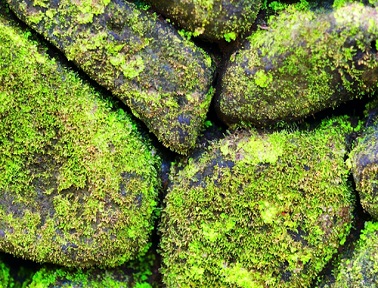 We humans are primed for novel experiences. New sights capture our attention; old sights barely register. Psychologists call this “habituation.” A non-threatening stimulus, no matter how interesting in the beginning, will fail to interest us after repeated exposure. It’s a useful enough adaptation—we need to focus our brainpower, and there’s no need to waste time on old news.
We humans are primed for novel experiences. New sights capture our attention; old sights barely register. Psychologists call this “habituation.” A non-threatening stimulus, no matter how interesting in the beginning, will fail to interest us after repeated exposure. It’s a useful enough adaptation—we need to focus our brainpower, and there’s no need to waste time on old news.
However, sometimes this skill leads us to take things for granted that might warrant further attention. The next time you take the family for a walk in your neighborhood or town, here are five everyday sights in nature to examine in a new light:
Moss
Here on the rainy west side of Washington, moss is everywhere. Moss is usually overlooked or else aggressively eradicated, but rarely is it appreciated for its unique beauty.
Mosses have been around much longer than flowering plants. They contribute to the ecosystem in three primary ways:
- They help prevent soil erosion by soaking up water from rainstorms.
- This retained water is slowly released into the air, creating humidity that other plants need to thrive.
- They harvest nutrients from the air by trapping dust, which inadvertently scrubs pollutants from the atmosphere, a useful service by any measure.
There are thousands of species in all shapes and sizes, from nearly flat, cushy mats carpeting the ground, to tiny, Christmas-tree shapes, to leafy, lettuce look-alikes. Mosses may not produce the flashy colors of their distant relatives, the flowering plants, but they do produce dainty, diminutive capsules that hold spores (the second half of a two-stage reproductive process) above the parent plants.
So, next time you go on a nature walk, throw a magnifying glass or hand lens in your pack and take a look at these amazing members of the plant world.
Rocks
Rocks are a tangible reminder of gigantic natural processes, like time and pressure, volcanism, and plate tectonics. Heady topics, but accessible if you approach them in bite-sized pieces.
Start by picking up a rock—even one that is part of a gravel road. Where did it come from? What forces shaped it? That piece of gravel might have come from a nearby gravel pit. Was the rock mined there deposited by glaciers? Part of an old river bed? Crushed from limestone deposits? Wet the rock and even ordinary gravel comes alive with different colors and patterns.
Check out the landscaping rock in your neighbor’s yard. The light, red stone came from the belly of a volcano. The soft stone you dug up in the backyard might have bits of ancient plants or animals in its layers. Suddenly, the rocks beneath your feet aren’t so boring (which is what your two-year-old has been trying to tell you all along!).
Ants
Ants have received plenty of attention in pop culture. From Ant and the Aardvark to A Bug’s Life, there are plenty of cartoon versions, but how long has it been since you and the kids got up close and personal with the real thing (not too personal of course)?
Ants are social insects, like bees. They have complex societies and job differentiation, much like humans, which is probably why they are so often presented with human-like qualities. Ants also use smell to guide their fellow colony workers to a food source, which is why ants travel on little “ant highways.” Drop a few crumbs near a colony of pavement ants and have a hand lens hand to observe the action. You won’t see the full range of “ant jobs,” but you will see scouts, “gatherers,” and the “ant guards.”
Trees
Even in the most human-dominated urban “jungle,” there are usually a few trees scattered about. Though heralded for their beauty and as potential saviors of the planet for their air-scrubbing abilities, we don’t often stop to interact with individual trees.
The next time you’re out on a family walk, take a moment to look at a tree. They are remarkable feats of natural architecture. Their structures are strong enough to grow vertically, sometimes balanced in ways that would be disastrous for a building, yet they can bend in the wind. Water can be distributed from the roots to the tippy-top of the highest branch.
A tree is part of the eco-system around it, yet it can be a whole world to all sorts of small creatures. Look for tiny spider webs in the folds of the trunk. Spiders hunt insects which are, in-turn, hiding from birds under loose pieces of bark. Mosses, lichens, even ferns and other plants find trees to be hospitable hosts.
Have your family pick a tree to observe and even photograph over the course of a year to see the changes across seasons. Suddenly a single tree is not so ordinary!
Parking Lot Birds
By the term “parking lot bird,” I refer to birds so common in your town that you hardly give them a second look. Pigeons, house sparrows, starlings—hardly the darling of bird watchers anywhere.
We all get excited when we see a hawk in the city. We should—their presence represents a shattering of the wall between urban and wild. That said, we should not overlook the pigeon bobbing down the street or the noisy flock of sparrows drinking from a fountain. Each creature has its own story to tell, its own questions to pose. “Why are there so many different color patterns on pigeons?” “How did house sparrows get here from England?” “How do huge flocks of starlings fly together so closely without hitting each other?”
Even the most ubiquitous sites in nature have something to teach us, so long as we stop, pay attention, and go looking for the answers.



